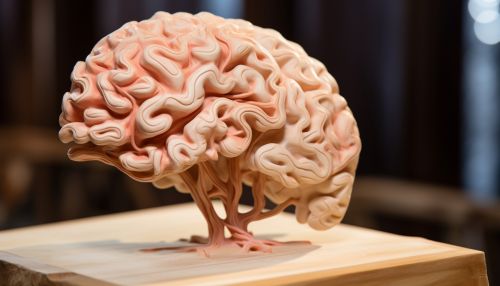Wernicke's area
Anatomy and Location
Wernicke's area is a region of the brain that is important for language development. It is located in Brodmann area 22, which is in the superior temporal gyrus in the dominant cerebral hemisphere, which is the left hemisphere in about 95% of right-handed individuals and 70% of left-handed individuals.


Function
Wernicke's area is traditionally understood to be responsible for the comprehension of speech (i.e., it is involved in the understanding of written and spoken language). This area surrounds the auditory cortex on the lateral sulcus (the part of the brain where the temporal lobe and parietal lobe meet). This area is neuroanatomically associated with the superior temporal sulcus, a structure responsible for the direct part of the arcuate fasciculus.
Clinical Significance
Damage to Wernicke's area can result in language deficits and is associated with a condition known as Wernicke's aphasia. This condition is characterized by difficulty understanding spoken and written language, difficulty finding the right words to express oneself, and difficulty repeating phrases. Patients with Wernicke's aphasia are often unaware of their language errors.
History
Wernicke's area is named after Carl Wernicke, a German neurologist who discovered its function in language comprehension in the late 19th century. Wernicke's observations of language deficits in his patients led him to theorize that this area of the brain was specifically involved in understanding language.
Relationship with Other Brain Regions
Wernicke's area is connected to another language-related brain region, Broca's area, via a bundle of nerve fibers called the arcuate fasciculus. This connection allows for coordinated, fluent speech. Damage to the arcuate fasciculus can result in a condition known as conduction aphasia, characterized by difficulty repeating words or phrases.
